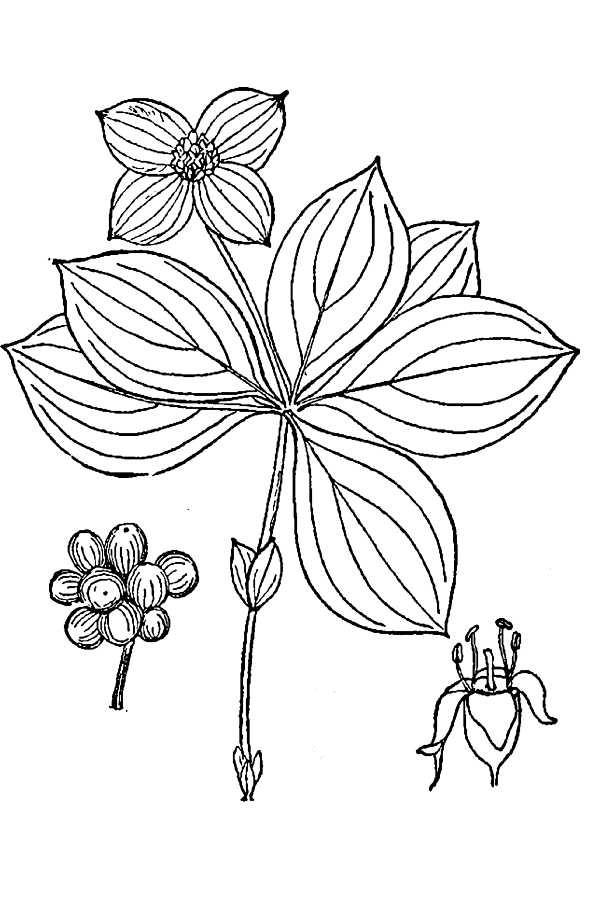Bunchberry Wild Edible
General
Bunchberry Plants are perennials growing 4” – 8” tall. Because they spread by rhizome they generally form a carpet-like mat. They are not overly tasty but in a foraging situation they are edible. Additionally, they are widespread and hence can be found in many places if you are looking and know what you are looking for.
Back to Edible Plants
Common Names
Bunchberry, dwarf cornel, creeping dogwood, crackerberry
Description

As previously stated, bunchberry are small plants that form carpet like colonies. Each “individual” plant grows a singular stem with about six leaves positioned at the top.
The elliptic, dark green leaves form as wheels at the nodes. Leaf veins follow the leaf margin as is seen in other dogwoods. In autumn, the leaves may develop red and yellow tones.
The plant generally puts forth four white leaves from the top center. These are not the flower. The true flowers are small white to purplish-white clusters in the center of the white leaves. The flowers are formed in late spring and early summer.
From the true flowers, clusters of red berry fruits grow beginning in mid-summer as the white leaves typically drop. The fruit can stay viable into late autumn.
Location
Bunchberry can be found growing in forested areas and is native to Canada, parts of Alaska and the northern to Central portions of the contiguous United States. It can be found coast to coast. It grows best in acid soils that are not overly dry. The plant grows best in shade, (4 hours or less of light daily).
Edible
The red ripe berries are the edible parts of the plant. They can be eaten raw or cooked. They can be combined with other fruits even added to puddings and sauces.
Harvest
In late summer into late fall the red berries are picked. The berries can be rather dry and tasteless but are edible.
Interesting Notes
Bunchberries were collected and eaten by Native Americans raw, cooked, even put into sauces and puddings.
The berries are a source of food for deer, grouse and small mammals.
Birds are the main dispersal agents of the seeds, feeding on the fruit during their fall migration.